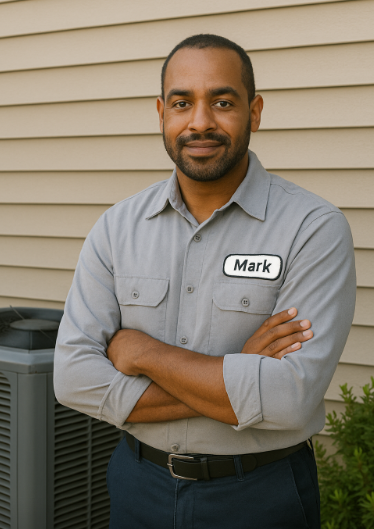If your HVAC technician just told you your 1 1/2 ton AC compressor or 2 1/2 ton AC compressor is failing, you’re facing an important choice: patch or plan? Replacing the compressor is often tempting if the rest of the system is only a few years old. But before you spend $1,200–$2,500 on that replacement, compare the cost, performance, and long-term benefits—or risks—of a full system upgrade instead.
What Are 1.5 and 2.5 Ton Compressors Used For?
-
A 1 ½ ton AC compressor is sized around 18,000 BTU/h—best suited for a small home, apartment, or isolated zone like a garage, office, or attic space.
-
A 2 ½ ton (2.5 ton) compressor delivers about 30,000 BTU/h and is more commonly used for homes of roughly 1,200–1,500 square feet, especially in mild to moderate climates.
Using resources like the ASHRAE load estimation guide, HVAC professionals size systems based on total BTU requirements, ductwork capacity, and ambient conditions. Oversizing or undersizing leads to inefficiency or poor comfort.
How Much Does a Compressor Replacement Cost?
According to industry sources:
-
Replacing a 2 ½ ton air conditioner compressor typically costs $1,200 to $2,500, including part and labor (PickHVAC pricing data).
-
A 1 ½ ton compressor replacement generally falls on the lower end—$800 to $1,800 depending on brand and refrigerant needed.
-
Many technicians will charge 3–4 hours of labor plus refrigerant recharge, including adding UV dye and system flushing.
However, as The Spruce reports, older systems using R-22 refrigerant are becoming expensive to service, and parts may be difficult to source—making full system replacements more attractive.
Is a Full-System Upgrade Worth It?
Unfortunately, replacing just the compressor can be a temporary fix if the system is older than 10 years. Issues could include worn coils, aged capacitors, low airflow, leaking ducts, or refrigerant not meeting current R-32 standards.
When you factor in lifetime operating costs, a modern system like the Goodman 3 Ton 14.5 SEER2 R‑32 bundle—if correctly sized and installed—can save 30% or more on energy bills compared to older systems.
-
The Goodman system uses R‑32 refrigerant, significantly reducing greenhouse impact.
-
Current SEER2 standards require higher efficiency than older models deliver.
-
New central systems often come with better warranties, variable-speed capability, and improved indoor air quality.
The U.S. Department of Energy outlines how modern equipment outperforms legacy systems in real-world conditions.
Compressor vs. System: Make the Smart Decision
Replace the Compressor When:
-
The system is under 10 years old
-
Everything else (coil, blower, ducts) is in good condition
-
Refrigerant is legal and available (preferably R‑32 or R‑410A)
-
You’re looking for a quick repair to extend system life 3–5 years
Consider Upgrading When:
-
The system is older than 10–12 years
-
Refrigerant is R‑22 or outdated
-
You’re replacing the compressor for the second time
-
The system underperforms in few HVAC cycles
-
Energy savings and long-term value matter
If you still want that 2 ½ ton compressor replaced, make sure your system is sized appropriately: not only matching BTU output, but also airflow (CFM), duct configuration, and refrigerant piping.
<img alt="Air Conditioner Split System Schematic">
Proper System Sizing Matters
Even if you only needed to serve one zone or a finished basement, it’s crucial to size HVAC equipment precisely:
-
Overshooting with a 1 ½ ton unit in a 1,000 sq ft area results in constant cycling and poor dehumidification.
-
Undersizing with that same 1.5 ton heats your space slowly and drives up wear.
Lennox and Carrier’s load calculation tools, along with the Manual J guide from the ACCA, emphasize that square footage alone is insufficient—you must account for insulation, windows, climate zone, and building envelope.
How Replacement Costs Stack Up
| Scenario | Approx. Installed Cost | Pros | Cons |
|---|---|---|---|
| Replace 1½ ton compressor | $800–$1,800 | Fast, low cost upfront | May not resolve underlying issues |
| Replace 2½ ton compressor | $1,200–$2,500 | Extends system life for a few years | Risk of other system failures |
| Upgrade to Goodman 3 Ton R‑32 System | $4,500–$7,500 | Improved efficiency & full warranty | Higher upfront cost, possible ductwork changes |
Over a typical 12-year span, savings from energy efficiency and fewer repairs may offset the difference—and then some.
Long-Term Value: What Most Homeowners Miss
Even without rebates, homeowners steadily save when they upgrade to high-efficiency HVAC systems. You’ll also benefit from better dehumidification, quieter operation, improved indoor air quality, and flexible zoning.
PickHVAC found that upgrading to high-SEER systems can save 20%–35% annually—money that mounts quickly over a decade.
Final Word from Mark Callahan
When you’re trying to decide whether to just replace that 2 ½ ton air conditioner compressor or go all in with a new setup—the smart move depends on your home’s age, comfort needs, and long-term goals.
-
Need a quick, last-minute repair to survive one more season? A compressor replacement might be acceptable.
-
But if your system is old, inefficient, or unreliable, consider investing in a newer, more efficient system like the Goodman 3 Ton 14.5 SEER2 R‑32 bundle.
-
You’ll save on monthly energy bills, increase your comfort, and reduce repair headaches down the line.
Want help calculating your true HVAC needs or comparing system types? I’m happy to walk you through it—call me old school, but I still believe comfort and efficiency go hand in hand.







